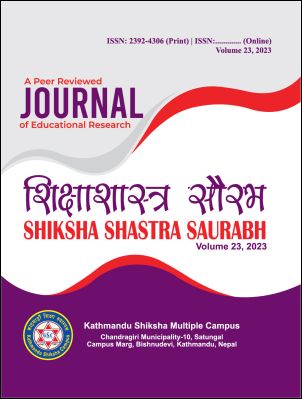Socio-Economic Diversity and Inclusion in MBBS Graduates in Nepal
DOI:
https://doi.org/10.3126/sss.v23i1.51937Keywords:
Medical professional, caste, ethnicity, inclusion, diversityAbstract
The purpose of this research is to investigate caste and ethnic composition of in MBBS graduates in Nepal. The researcher undertook the study of MBBS education provided by two universities TU, KU and their affiliated colleges. In total, eighteen medical colleges offering MBBS were finalized. Specifically, the study was undertaken to fulfill the following objectives: to analyze socio-economic inclusion in MBBS education in Nepal and to examine socio-economic diversity in terms of caste and ethnicity of MBBS students. Secondary data, of four admission cycles (2015-2018) of MBBS students obtained from University Dean’s office, were used for the study. Admission to medical school today determines the composition of medical professionals in then future. Caste/ethnic inclusion in medical professionals helps to fully understanding diversity of health problems. Biased medical education affects clinical practice. To address complex and diverse health problems, the medical professionals must become more diverse. The year-wise observation of caste and ethnic inclusion reflects some improvement. Comparatively, 2018 is the most inclusive year in relative term, but disparity still exists. This gets compounded when marginalized communities added on. MBBS education attainment is significantly different among caste and ethnic groups. BCTD is the most represented in MBBS education with 53.2% share, whereas, Dalits are underrepresented ethnic groups with 2.6%. In caste and ethnic inclusion, private medical colleges are better than public ones. Government should
provide subsidy to the deserving students from marginalized communities in order to increase their access to medical education. The Government and medical colleges should work to establish inclusive policy that enhance equal opportunities.
Downloads
Downloads
Published
How to Cite
Issue
Section
License
© Research Management Cell (RMC), Kathmandu Shiksha Campus

